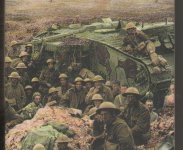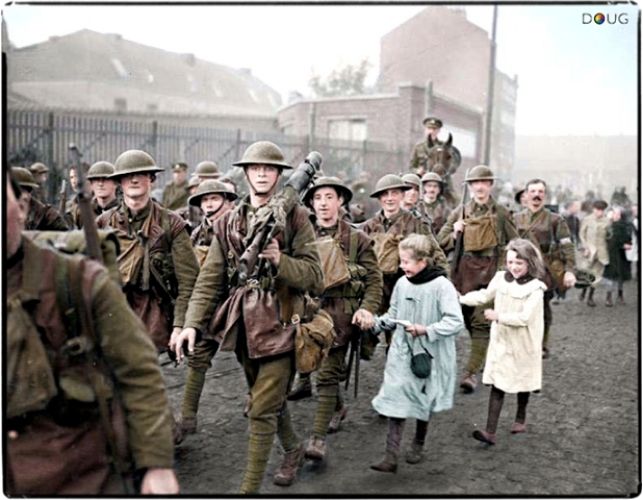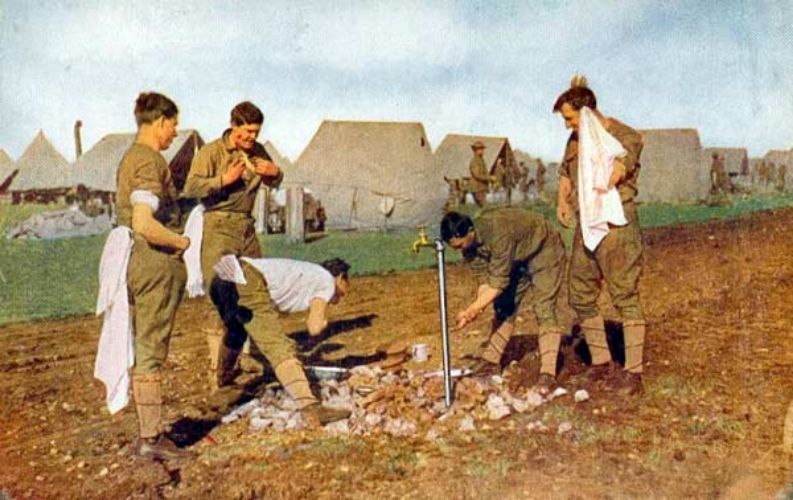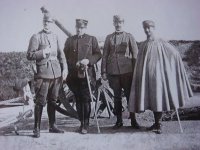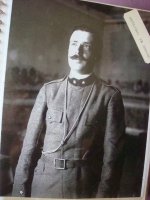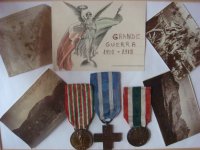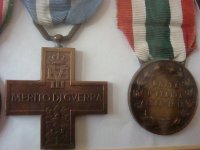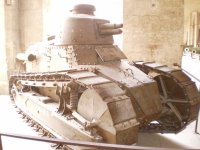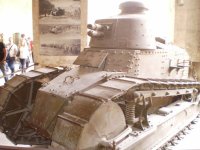You are using an out of date browser. It may not display this or other websites correctly.
You should upgrade or use an alternative browser.
You should upgrade or use an alternative browser.
WW1 Pic Of the Day (1 Viewer)
- Thread starter Rob
- Start date
waynepoo
Colonel
- Joined
- Jan 3, 2012
- Messages
- 9,729
Victoria Cross laureate of the first A.I.F
Pte. John William Alexander Jackson, VC. 17th Battalion.
On the night of 25 June 1916, Jackson was acting as a scout for a party of forty soldiers,
as they carried out an assault on the forward trenches of a Prussian infantry regiment,
south-east of Bois Grenier (near Armentieres). During the assault Jackson captured an
enemy soldier and returned with him through no man's land. Prisoners were valued for
the purpose of interrogation. On learning that some of his party had been hit in the intense
shelling and gun-fire, Jackson returned to no man's land. He helped to bring in a wounded man,
before going out again. While assisting Sergeant Camden to bring in the seriously wounded
Pte. Robinson, a shell exploded nearby. The blast rendered Camden unconscious, blew off
Jackson arm above the elbow and inflicted further wounds to Robinson.
Despite the loss of his arm, Jackson managed to return to his trenches, claiming he only felt
''a numbing sensation''. An officer applied a tourniquet to his arm, using a piece of string and a stick,
and Jackson returned to no man's land for another half an hour until he was satisfied there were no
wounded men left on the battlefield.
The hospital ship St. Patrick took Jackson from Boulogne to England where the remainder of his
right arm was amputated. While recovering in an Australian military hospital near London, it was
announced that Jackson had been awarded the Victoria Cross ''for his coolness and most conspicuous
bravery while rescuing his wounded comrades while under heavy enemy fire''. Approval of Jacksons VC
was gazetted on 8 September 1916, five days prior to his nineteenth birthday.
Wayne.
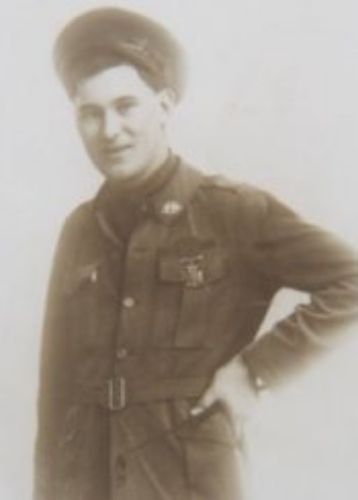
Pte. John William Alexander Jackson, VC. 17th Battalion.
On the night of 25 June 1916, Jackson was acting as a scout for a party of forty soldiers,
as they carried out an assault on the forward trenches of a Prussian infantry regiment,
south-east of Bois Grenier (near Armentieres). During the assault Jackson captured an
enemy soldier and returned with him through no man's land. Prisoners were valued for
the purpose of interrogation. On learning that some of his party had been hit in the intense
shelling and gun-fire, Jackson returned to no man's land. He helped to bring in a wounded man,
before going out again. While assisting Sergeant Camden to bring in the seriously wounded
Pte. Robinson, a shell exploded nearby. The blast rendered Camden unconscious, blew off
Jackson arm above the elbow and inflicted further wounds to Robinson.
Despite the loss of his arm, Jackson managed to return to his trenches, claiming he only felt
''a numbing sensation''. An officer applied a tourniquet to his arm, using a piece of string and a stick,
and Jackson returned to no man's land for another half an hour until he was satisfied there were no
wounded men left on the battlefield.
The hospital ship St. Patrick took Jackson from Boulogne to England where the remainder of his
right arm was amputated. While recovering in an Australian military hospital near London, it was
announced that Jackson had been awarded the Victoria Cross ''for his coolness and most conspicuous
bravery while rescuing his wounded comrades while under heavy enemy fire''. Approval of Jacksons VC
was gazetted on 8 September 1916, five days prior to his nineteenth birthday.
Wayne.

mestell
Colonel
- Joined
- Feb 12, 2008
- Messages
- 9,121
My Grandfather Chester W. Wagner taken somewhere in France in 1918. He was in the 17th RR Engineering Batallion.
:smile2: Mike
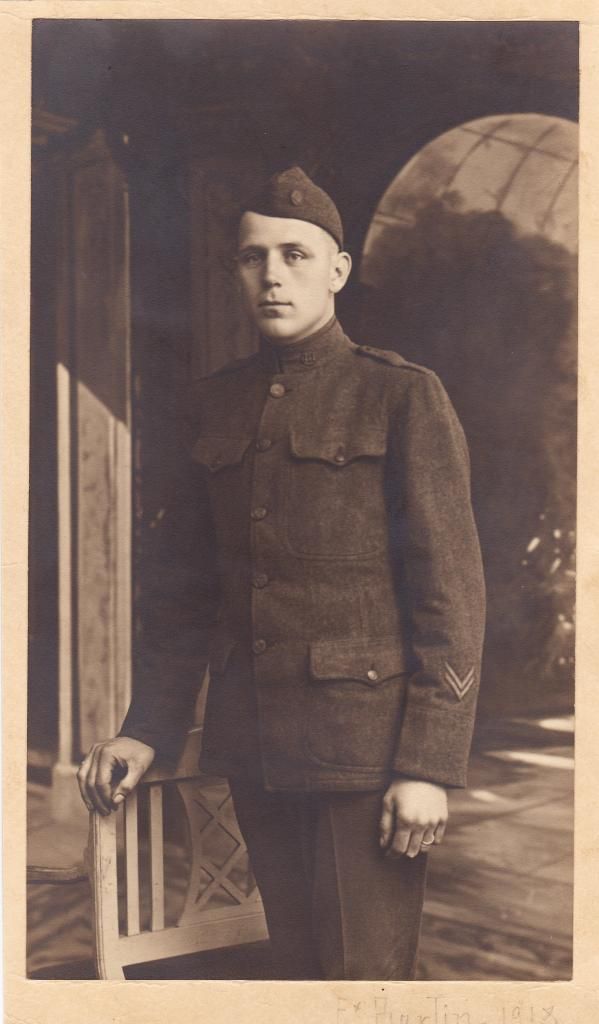
My Grand Uncle George Wagner (L) and my Grandfather (R) at basic training in 1917. George was my Grandfather's younger brother. Both were in Co. F, 17th RR Engineer Batallion. Haven't gone "Over There" yet.

My Grand Uncle George during basic training in 1917.
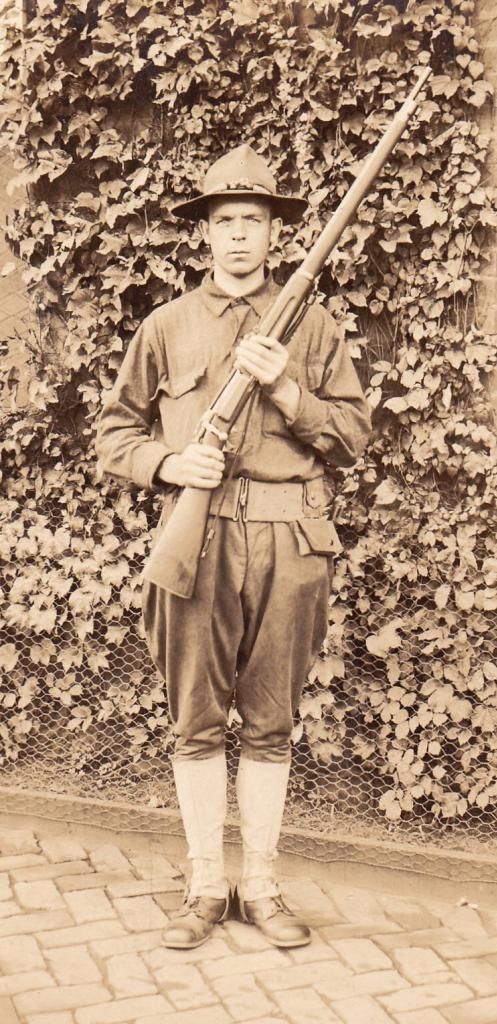
Let's not forget about the homefront. Photo of my Great Grandmother Achsah (far left), my Grand Aunt Elizabeth (middle) and my Great Grandfather John Wagner (far right) holding up their blue star flag indicating that both their sons/brothers were serving over in France. Taken in 1918.
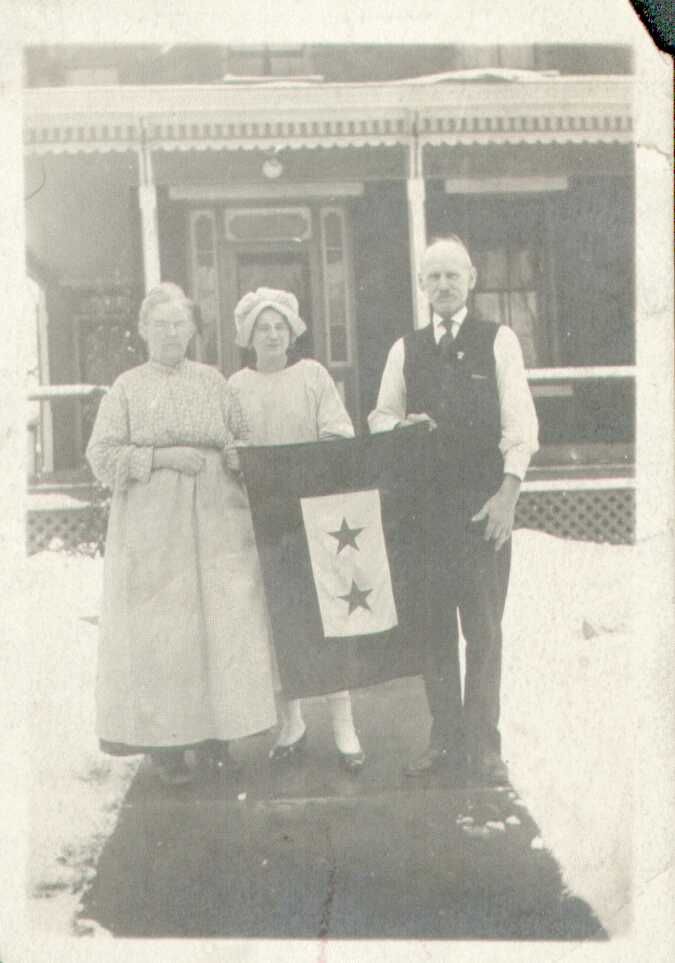
:smile2: Mike

My Grand Uncle George Wagner (L) and my Grandfather (R) at basic training in 1917. George was my Grandfather's younger brother. Both were in Co. F, 17th RR Engineer Batallion. Haven't gone "Over There" yet.

My Grand Uncle George during basic training in 1917.

Let's not forget about the homefront. Photo of my Great Grandmother Achsah (far left), my Grand Aunt Elizabeth (middle) and my Great Grandfather John Wagner (far right) holding up their blue star flag indicating that both their sons/brothers were serving over in France. Taken in 1918.

Last edited:
Great family history pictures. Some interesting uniform details to be seen. In the picture of your grandfather taken in France, notice the two chevrons on the lower left sleeve. They are service chevrons, each representing 6 months of overseas service. Also interesting is the picture taken of the two in the US, wearing the standard issue wool shirt which only unbuttoned halfway, making the shirt a pullover. This was designed to avoid a messy appearance where soldiers might run around wearing an open shirt with tails hanging out. I also note the basic training picture with the issue of the obsolete Krag rifle. Very interesting pictures. -- AlMy Grandfather Chester W. Wagner taken somewhere in France in 1918. He was in the 17th RR Engineering Batallion.
:smile2: Mike
My Grand Uncle George Wagner (L) and my Grandfather (R) at basic training in 1917. George was my Grandfather's younger brother. Both were in Co. F, 17th RR Engineer Batallion. Haven't gone "Over There" yet.
My Grand Uncle George during basic training in 1917.
Let's not forget about the homefront. Photo of my Great Grandmother Achsah (far left), my Grand Aunt Elizabeth (middle) and my Great Grandfather John Wagner (far right) holding up their blue star flag indicating that both their sons/brothers were serving over in France. Taken in 1918.

Jack
Major
- Joined
- Dec 16, 2011
- Messages
- 6,347
Call of nature....
Was there a book about this? The French Loo Attendant's Woman??{sm4}{sm4}
The Military Workshop
1st Lieutenant
- Joined
- Jul 31, 2005
- Messages
- 4,778
Was there a book about this? The French Loo Attendant's Woman??{sm4}{sm4}
I think this deserves just more than a "like". So two "likes""for this one.:salute::
waynepoo
Colonel
- Joined
- Jan 3, 2012
- Messages
- 9,729
As Arnie once said 'I'll be back', and you are.....{sm3}^&grinWas there a book about this? The French Loo Attendant's Woman??{sm4}{sm4}
Wayne.
mestell
Colonel
- Joined
- Feb 12, 2008
- Messages
- 9,121
Great family history pictures. Some interesting uniform details to be seen. In the picture of your grandfather taken in France, notice the two chevrons on the lower left sleeve. They are service chevrons, each representing 6 months of overseas service. Also interesting is the picture taken of the two in the US, wearing the standard issue wool shirt which only unbuttoned halfway, making the shirt a pullover. This was designed to avoid a messy appearance where soldiers might run around wearing an open shirt with tails hanging out. I also note the basic training picture with the issue of the obsolete Krag rifle. Very interesting pictures. -- Al
Thanks Al . . . I am glad you found these photos of interest. My brother has our Grandfather's 30-40 Krag which he was allowed to keep. I inturn, have a large box filled with his WWI memorabilia including uniforn buttons, his wallet that has used leave passes in it, dice, pin knife made from a spent rifle shell, postcards of France, letters he received from a French girl, and a great many photos he took while in France of the countryside, his army buds, and his duty locations. Unfortuneately he did not identify any of the photos and although interesting to look at, I have no idea where they were taken at, the time frame, or the names of the fellows in them.
:smile2: Mike
This picture makes me feel wet and miserable just to look at it. Close examination reveals rain droplets at the tips of the wire barbs. Fine weather. -- AlBattle of Polygon Wood 26 September - 3 October: A German prisoner holding a mess tin looks through the barbed wire of a 'cage' at Langemarck.

© IWM (Q 3067)
Currahee Chris
Sergeant Major
- Joined
- Apr 24, 2007
- Messages
- 4,776
letters he received from a French girl,
Any chance you got those translated?? Not quite the same thing but my grandfather told my wife and I (we were 22 at the time) of a woman he married before he left to Europe for WW2. He never revealed anything about that to anyone (not sure if his wife, my grandmother, actually knew or not). Guess they got it annulled our whatever a couple months after he got to France. Never know, you may have some long lost French relations in those letters!! {sm3}{sm3}{sm4}
STANDS ALONE
CC
Rob
Four Star General
- Joined
- May 18, 2005
- Messages
- 26,622
French Army Museum, ParisView attachment 138459View attachment 138460
Smashing pics mate, thanks for posting. Did you go to the new WW1 museum outside Paris by any chance?
Rob
Users who are viewing this thread
Total: 2 (members: 0, guests: 2)


